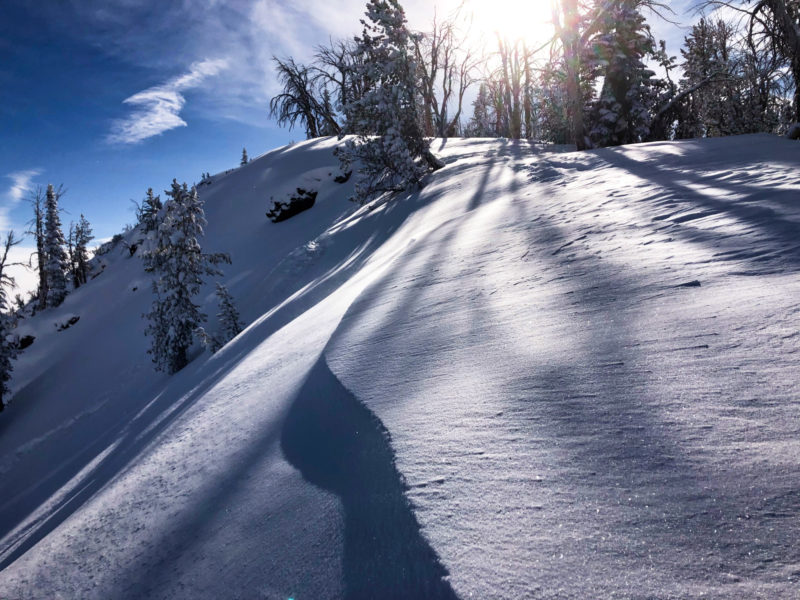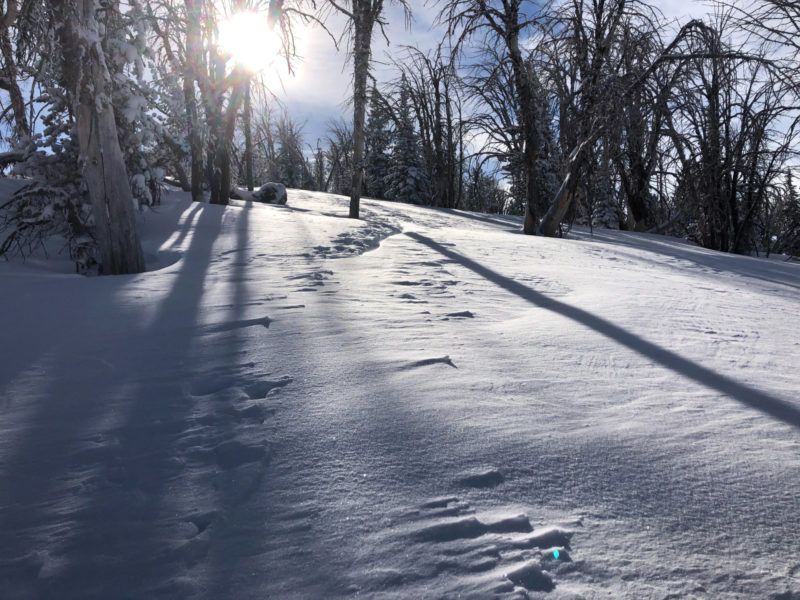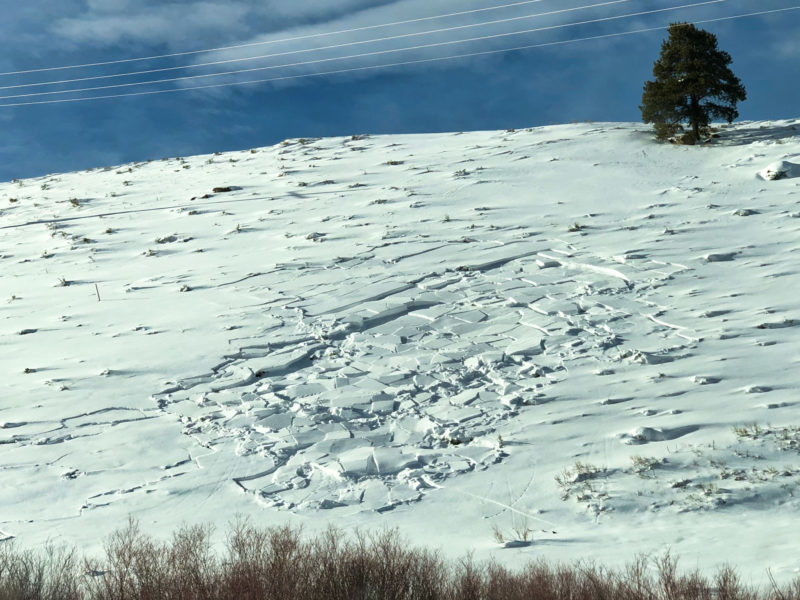Basic Information
Observation Details
Observation Date:
December 19, 2020Submitted:
December 19, 2020Observer:
SAC - Chris LundyZone or Region:
Galena Summit and Eastern MtnsLocation:
Titus Ridge (8700-9900, NE-E-SE)Signs of Unstable Snow
Recent Avalanches?
None ObservedCracking?
IsolatedCollapsing?
IsolatedSnow Stability
Stability Rating:
GoodConfidence in Rating:
HighStability Trend:
SteadyBottom Line
A soft, 8-10" thick soft slab sits atop the very weak/faceted old snow surface. At this point, it is not a sufficient load to produce widespread instability. Triggering an avalanche would likely require finding a slope with additional loading from wind transport or a very steep (>40*) slope.
Media/Attachments



Advanced Information
Weather Summary
Cloud Cover:
Mostly CloudyWind:
Light , WSkies were a mix of scattered and broken. Winds were generally light, but occasionally blew in the moderate range. Wind transport could be observed in alpine terrain above 10,000'. Small to moderate amounts of snow were being moved along Titus Ridge.
Avalanche Observations
See photo of natural D1 just above the highway outside of Stanley.
Snowpack Observations
Wind loading along Titus Ridge seemed to be just adding another generation of drifting to the pillow immediately off the ridge crest and did not seem to be adding much load to the 12/11 layer. Wind transport may have been more extensive in the alpine based on the snow blowing about the higher peaks.
Dug two pits to look at the effect of a melt-freeze crust between the facets and the overlying soft slab. In both locations, 25cm of F newer snow sat atop a crust which was then atop the 20-30cm of extremely weak, well-developed FCcf. @9700', ESE the crust above the facets was 2cm thick and around 1f+. It produced an ECTN10 and maybe an ECTP10. @9500', E the crust above the facets was thinner, softer, and produced ECTP3 x3 and ECTP5 (see photo).
Observations today were markedly different from yesterday on Banner. The slab depth on Titus ranges from 20-25cm and is very soft (F). While the slab on Banner isn't that much thicker (25-30cm), it probably has 50% more weight to it and is F+ in hardness. A subtle difference, but it was enough to produce much more collapsing yesterday as well as worse test scores. The nature of the weak layer is similar, just different stages of loading.

Avalanche Problems
| Problem | Location | Distribution | Sensitivity | Size | Comments |
|---|---|---|---|---|---|
 Persistent Slab
Persistent Slab
|
|
Weak Layer(s):
Dec 11, 2020 (FCsf)
Comments: Layer is widespread, but problem is specific to wind loaded/affected slopes, and possibly very steep/convex slopes (>40*) |
I did not observe a wind slab problem existing in the absence of the above persistent weak layer.
